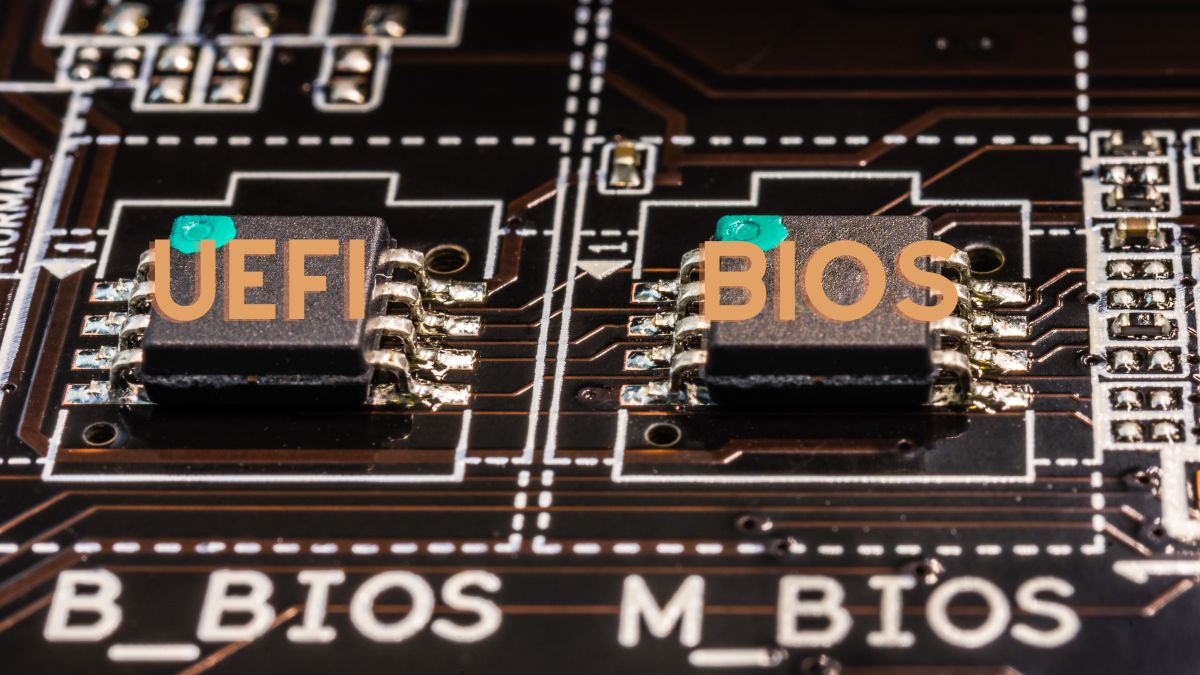UEFI: what it is, how it differs from the BIOS and why it is important for your computer

In addition to the components you know, such as RAM, processor, hard drive, battery, graphics card, etc., computers need an internal system whose code contains the instructions necessary to perform a safe boot and that puts the point the team.
For this, the BIOS was created, which since 1975 was in charge of starting the hardware and the software of desktop computers and laptops.
Specifically, this system is a low-level program that resides on a chip on the computer’s motherboard. It is responsible for starting the operating system, as well as performing tasks such as detecting components and setting the system time.
It’s the component that imperceptibly, but fundamentally, sets the stage for your experience to begin smoothly. However, as we moved into the 1990s, big technology companies noticed that the BIOS code was becoming obsolete.
Due to the demands of new PC designs, that’s when UEFI, the successor to BIOSto carry out a renovation from head to toe.
In 2015, a conglomerate of technology companies, including Intel, AMD, Dell, Lenovo, and Microsoft, came together to form the UEFI Foundation.
This project emerged to develop a vitaminized and improved BIOS, safer, faster and capable of supporting hard drives larger than 2 TB. Quickly, this code became the answer to the need for a starting system that was up to today’s demands.
UEFI has become the de facto standard for modern computers. In fact, most models sold today use this code instead of BIOS, but there is still a lot of confusion among users.
Key differences between UEFI and BIOS
The transition of BIOS to UEFI brought about notable changes in how modern computers start and operate.
From its origin as a classic BIOS to becoming the advanced UEFI, these internal systems have played a fundamental role in the smooth and secure deployment of computers. Here we share a list with the key differences between BIOS and UEFI:
Bootability and architecture
- BIOS: Runs in 16-bit mode, limiting boot speed.
- UEFI: Can run in 32-bit or 64-bit mode, allowing for faster boot times.
Graphic interface
- BIOS: Traditionally text-based, with settings adjusted using specific keys. It does not support graphical interfaces or mouse cursors.
- UEFI: Offers more modern and friendly graphical interfaces. It can interact with a mouse, providing a more intuitive user experience.
Support for higher capacity hard drives
- BIOS: Limited by the MBR partition scheme, limiting the size of hard drives to 2.2TB.
- UEFI: Uses the GPT partitioning scheme, removing the size restriction and allowing hard drives larger than 2TB in capacity.
Security
- BIOS: Lacks advanced security features, making it more susceptible to threats such as malware during the boot process.
- UEFI: It has secure boot, which verifies the validity of the operating system and prevents the execution of unauthorized code during startup.
Integrated Network Capabilities
- BIOS: Does not include networking functionality directly in the firmware.
- UEFI: Provides support for network functions, making it easy to configure and troubleshoot remotely.
Storage settings
- BIOS: Uses battery-backed CMOS memory to store settings.
- UEFI: Can be stored in flash memory on the motherboard or loaded from a hard drive or network share during boot.
Backward Compatibility
- BIOS: Traditionally more resistant to changes and updates, with limited compatibility with newer operating systems.
- UEFI: Provides BIOS emulation, allowing installation and booting of older operating systems.
Continuous development and support
- BIOS: Its development is static, with limited updates, so there is no active industry participation.
- UEFI: In 2015, the UEFI foundation was formed with the collaboration of 140 companies, indicating a more dynamic and collaborative approach. This has led to continued development and more frequent updates.
The move from BIOS to UEFI is not a simple matter of nomenclature; It is a radical transformation in the way computers start and operate.
UEFI improves in all aspects, from boot speed to security and user interface. Thanks to this technology, PCs can better respond to current needs and challenges.
The main difference between both systems is that the latter offers a number of advantages over the BIOSsuch as support for larger hard drives, extended support, storage configuration and increased network capacity.



